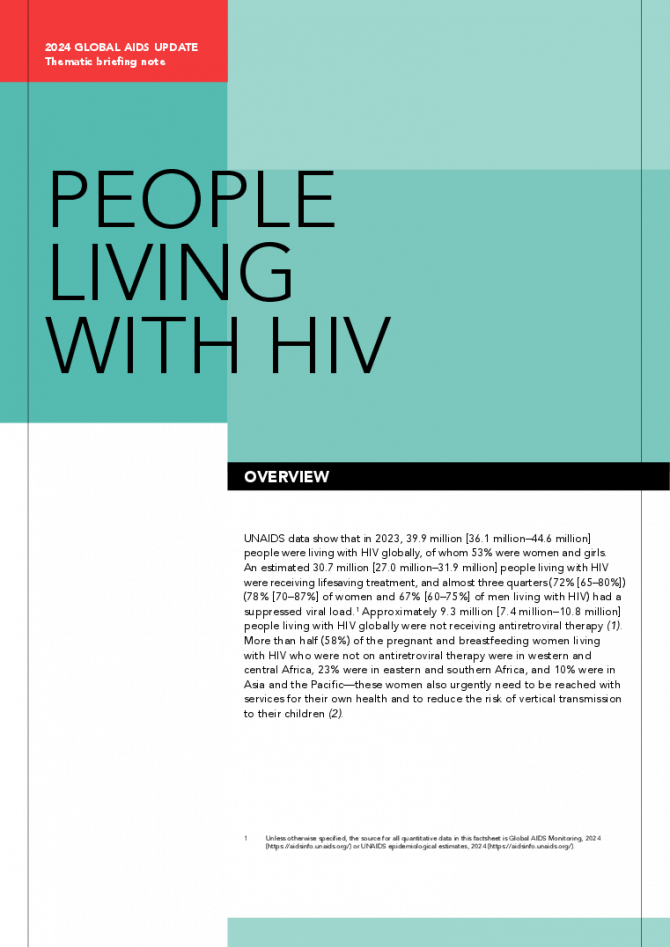Documents
People living with HIV — Thematic briefing note — 2024 global AIDS update The Urgency of Now: AIDS at a Crossroads
22 July 2024
UNAIDS data show that in 2023, 39.9 million [36.1 million–44.6 million] people were living with HIV globally, of whom 53% were women and girls. An estimated 30.7 million [27.0 million–31.9 million] people living with HIV were receiving lifesaving treatment, and almost three quarters (72% [65–80%]) (78% [70–87%] of women and 67% [60–75%] of men living with HIV) had a suppressed viral load. Approximately 9.3 million [7.4 million–10.8 million] people living with HIV globally were not receiving antiretroviral therapy. More than half (58%) of the pregnant and breastfeeding women living with HIV who were not on antiretroviral therapy were in western and central Africa, 23% were in eastern and southern Africa, and 10% were in Asia and the Pacific—these women also urgently need to be reached with services for their own health and to reduce the risk of vertical transmission to their children. HIV is now comparable to that of the general population. The proportion of new HIV infections among people aged 50 years and over is anticipated to increase from 28% in 2010 to 73% in 2030. As people living with HIV who are on treatment get older, comorbid health conditions among people living with HIV need to be taken into account for programming. Related links: New UNAIDS report shows AIDS pandemic can be ended by 2030, but only if leaders boost resources and protect human rights now | Full report

